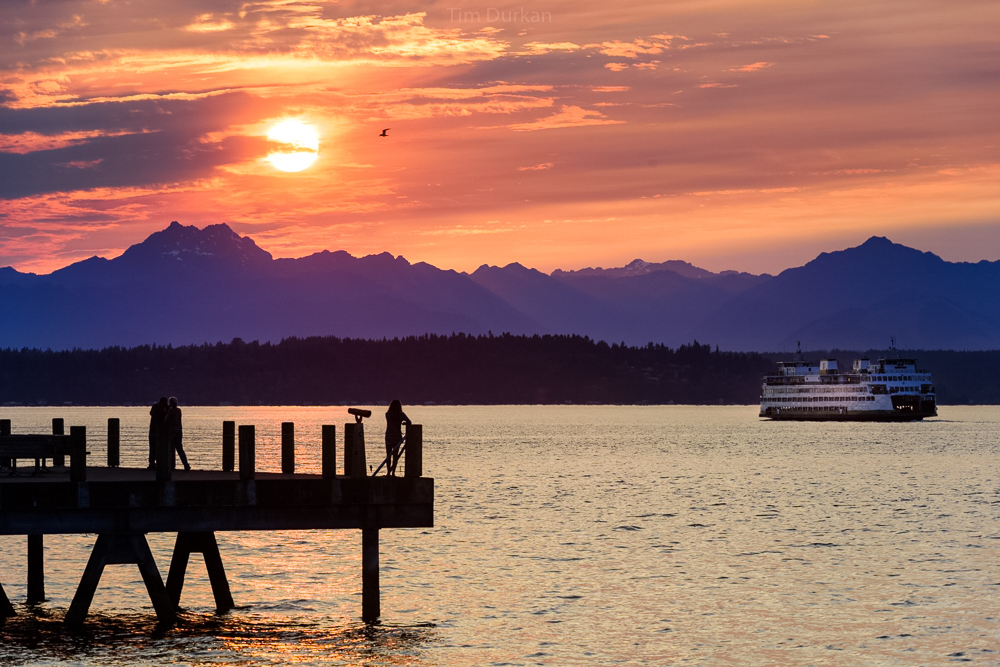
 Nolan Rundquist, City Arborist, recently received a Seattle Department of Transportation Shining Star award in recognition for his key role in the passage of the City’s new Tree Ordinance. Modest about his many achievements, Nolan’s the last to admit that the ordinance passed in May would not have come about were it not for his 14 years of persistent effort to make it a reality.
Nolan Rundquist, City Arborist, recently received a Seattle Department of Transportation Shining Star award in recognition for his key role in the passage of the City’s new Tree Ordinance. Modest about his many achievements, Nolan’s the last to admit that the ordinance passed in May would not have come about were it not for his 14 years of persistent effort to make it a reality.
Rundquist came to his position with Urban Forestry in 1998 after having served as City Arborist for the City of Fremont, Nebraska. Seattle’s first and only Tree Ordinance had not been updated since it was written in 1961. In 1999, his quest to shape a City Tree Ordinance began by meeting with representatives from many City departments, professional arborists and even private sector representatives such as realtors. By the year 2000, he had a draft version in hand, but that was only the beginning of a long, long effort involving countless community representatives, business owners, tree professionals, representatives from Seattle Public Utilities, City Light, Department of Neighborhoods, Department of Planning and Development, Law Department, Parks Department, Office of Sustainability and Environment, Fleets and Facilities (Finance Administration Services), several City Councils and three Mayors. Around and around went the first draft, the second draft and on to the final tenth draft. As Nolan prefers to say, “There are a lot of fingerprints on this ordinance.” But through it all, Nolan kept at it when a lot of folks would have given up on the frustrating journey. He feels both the ordinance and the public’s reception of it improved with the process.
Why is the Tree Ordinance so important? An urban forest is part of a larger ecological system which is integral to the health of our city; and trees in the public place provide environmental, economic, and aesthetic benefits to the citizens of Seattle. The benefits of urban forests increase with tree numbers and size, thus mature trees have a higher value and should be preserved. A sustainable urban forest supports the City’s goals and policies by reducing storm water runoff and pollution, absorbing air pollutants and carbon dioxide, providing wildlife habitat, stabilizing soil, and increasing property values. Street trees also provide shade for sidewalks, walkways, and roadways; provide a buffer between motor vehicles and pedestrians; and serve to calm traffic. Seattle has set goals for increasing canopy cover citywide, including street trees, by preserving and protecting existing trees, and planting new trees. Stronger street tree legislation provide residents, departments, franchise operators, and developers with updated guidance on managing street trees in order to improve the urban forest canopy.
Because the ordinance regulates and protects our tree resource in the public right-of-way, it is based on national standards that are not arbitrary, and are scientifically solid and field-tested. In a nutshell, the new rules require a standard of reasonable, professional care for City- or privately-owned trees that are growing in the public right-of-way. Property owners and tree care providers must follow industry guidelines that promote proper tree pruning and care techniques.
Nolan is not yet done with his effort. Ultimately, there will be two more policy pieces for city-wide tree protection, but for now he is focused on informing the community members, landscapers and arborists about the details of the ordinance.
Thanks, Nolan, for your tenacity in protecting Seattle’s valuable urban forest!
For more information about the ordinance, please visit our website.